Today's Tidbit... Offensive Plays of 1947 or 1955
This is the fourth in a series concerning Everybody's Football, a Massachusetts Mutual Life advertising premium from 1955. The book explains various elements of the game as it existed at that time. Previous stories from the series include:
Today, we move from covering formations to plays. As mentioned in yesterday's article, they released Everybody's Football in 1947, and I'm working from a 1955 revision. However, most of the formations and plays have a 1940s vibe more than those from the 1950s, with most plays run from Single and Double Wing rather than the T.
Everybody's Football includes 20+ running plays, and even I don't want to review all those, so I've selected a handful to review. I've omitted the Spinner series since I covered it briefly in the recent past.
The running plays I'll review are those that resemble plays used today in one form or another. BTW, each play is shown against a 6-2 defense.
Straight Buck
Let's start with the Straight Buck. Buck is a term that is almost as old as football; the phrase "buck the line" appeared in coverage of English rugby in 1883, and then in American football starting in 1890. In both cases, it meant to run the ball straight ahead, or nearly so. Bigger, powerful runners were line buckers, while the smaller and swifter boys had to run wide. It has always been so.
No one bucks the line anymore, but they still run dives and isolation plays, especially at service academies.
Cross Buck
Then there is the Cross Buck, which the drawing shows from the T. The play is all about fooling the defense by faking the ball going in one direction, while giving it to the third back going in the opposite direction.
The Cross Buck was called in the huddle, so the back getting the ball was predetermined, but the underlying intent of the play reminds me of today's Read Option. In the Read Option, the quarterback reads the backside end to determine whether to give to the back crossing his face or to keep it. Although they are different plays, the Cross Buck and Read Option have some similarities.
Quarterback Sneak
Next, we have the Quarterback Sneak, a play that is unchanged today if your team puts the quarterback under center.
Including the Quarterback Sneak in the discussion gives me the chance to add a link to an earlier Tidbit, which describes how the Quarterback Sneak existed before the Modern T and the quarterback going under center.
Cut Back
The diagram for the Cut Back shows it from the Double Wing. At a high level, the Cut Back looks like an Outside Zone play. Although the Cut Back features man blocking, and the Outside Zone uses area or zone blocking, the core idea behind the play is to take advantage of overpursuit.
End Around
Another beauty from the 1940s or 1950s is the end around. Teams ran end and tackle arounds back in the 1890s, so they must have had some success, which, I guess, was due to the defense being confused about who carried the ball.
Nowadays, teams run sweeps with slots coming in Jet Motion, so the play hits faster, and the slot is nearing full speed by the time he gets the ball. Nebraska fans still have nightmares about Melvin Gordon running the play against them.
Mousetrap
Finally, we'll look at the Mousetrap, which the writeup says was sometimes called the Beartrap. By the time I came around it was the Trap, without the Mouse or the Bear.
As the Single Wing Mousetrap is drawn, many would consider it to be a kickout block on a Lombardi-ish sweep rather than a trap. Still, the logic of allowing an aggressive defender to come across the line and get blasted by someone coming from a different direction remains the same.
We'll take a look at either passing plays or defenses next.
Football Archaeology is reader-supported. Click here to donate a couple of bucks, buy one of my books, or otherwise support the site.


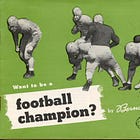
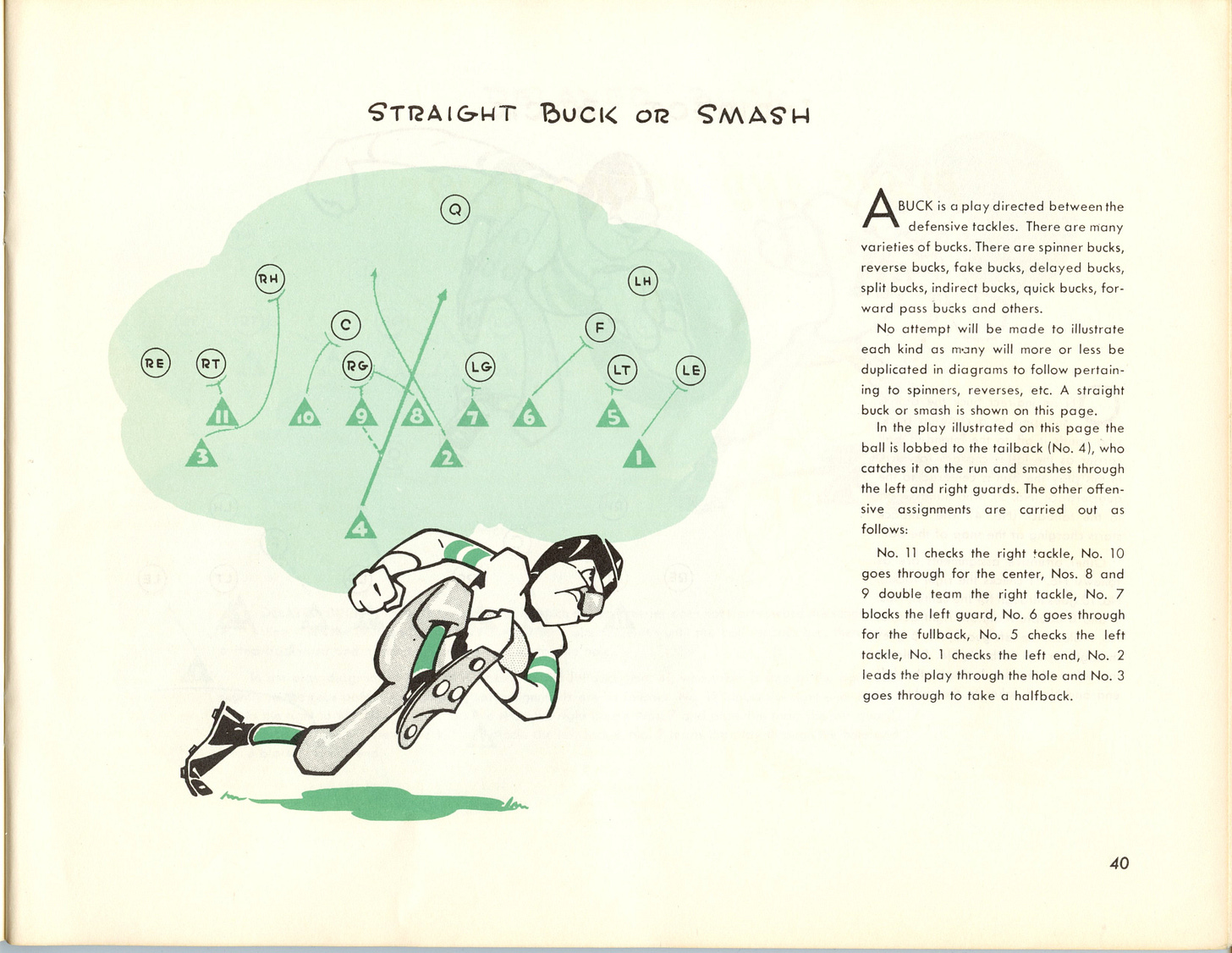
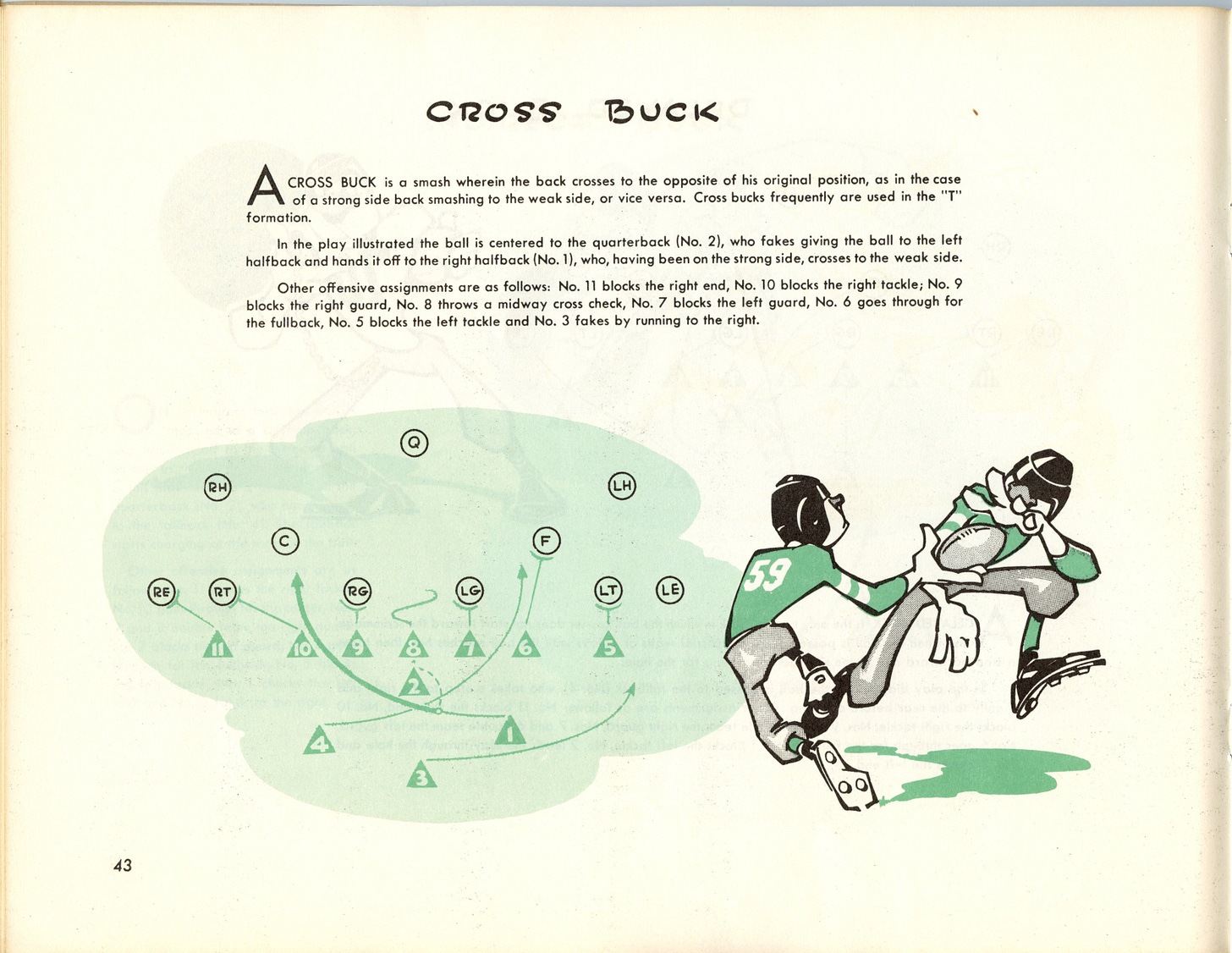
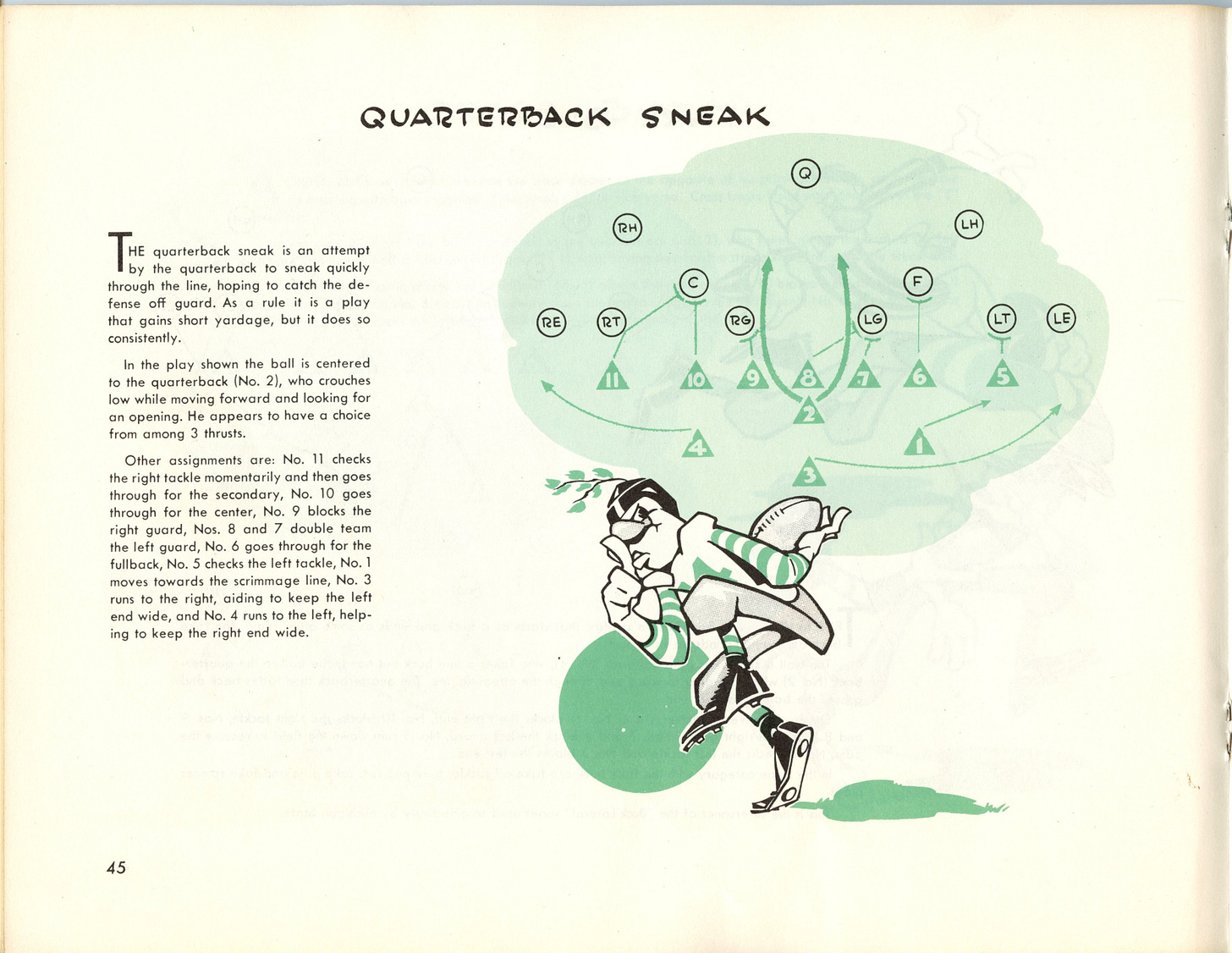
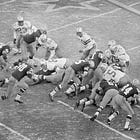
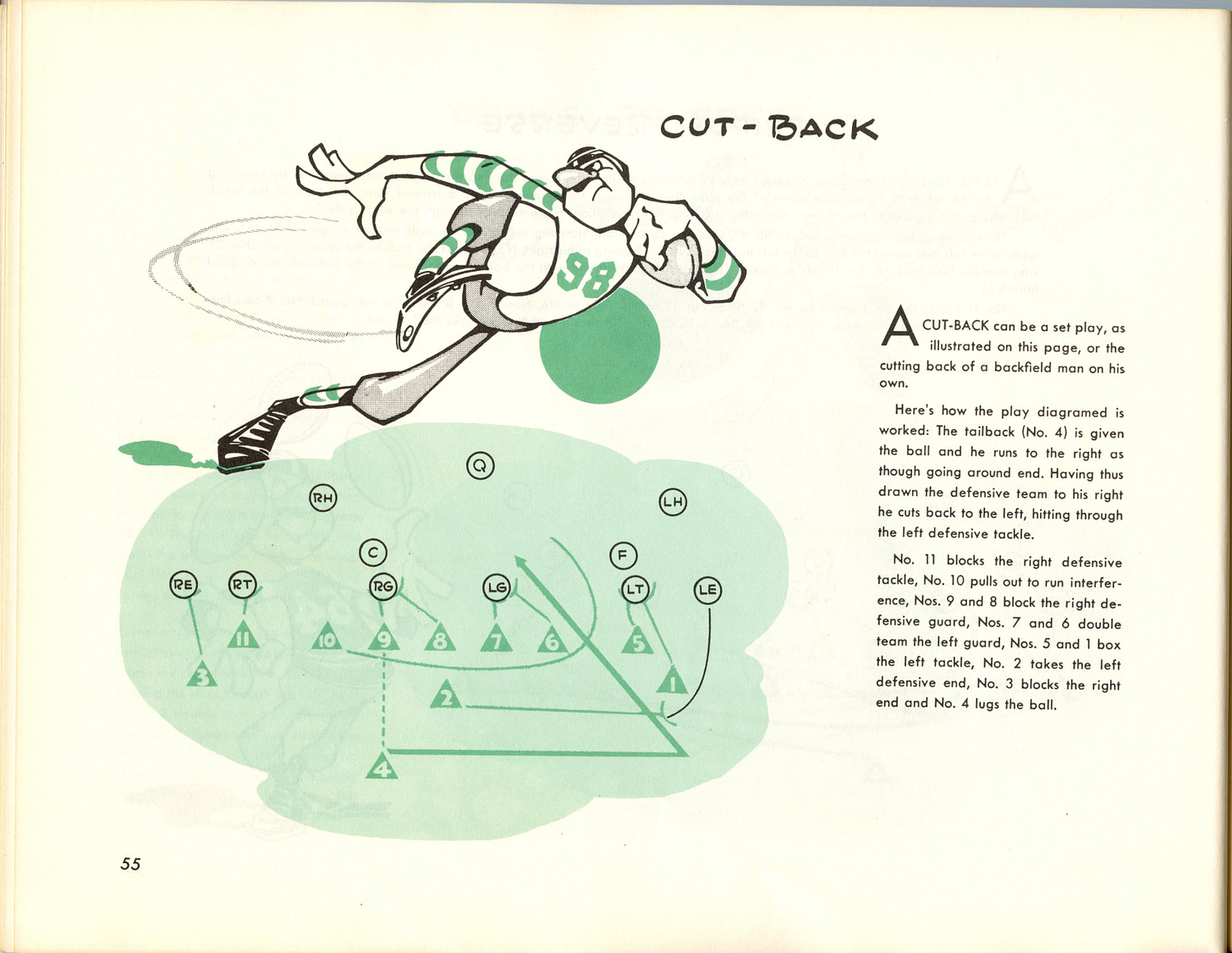
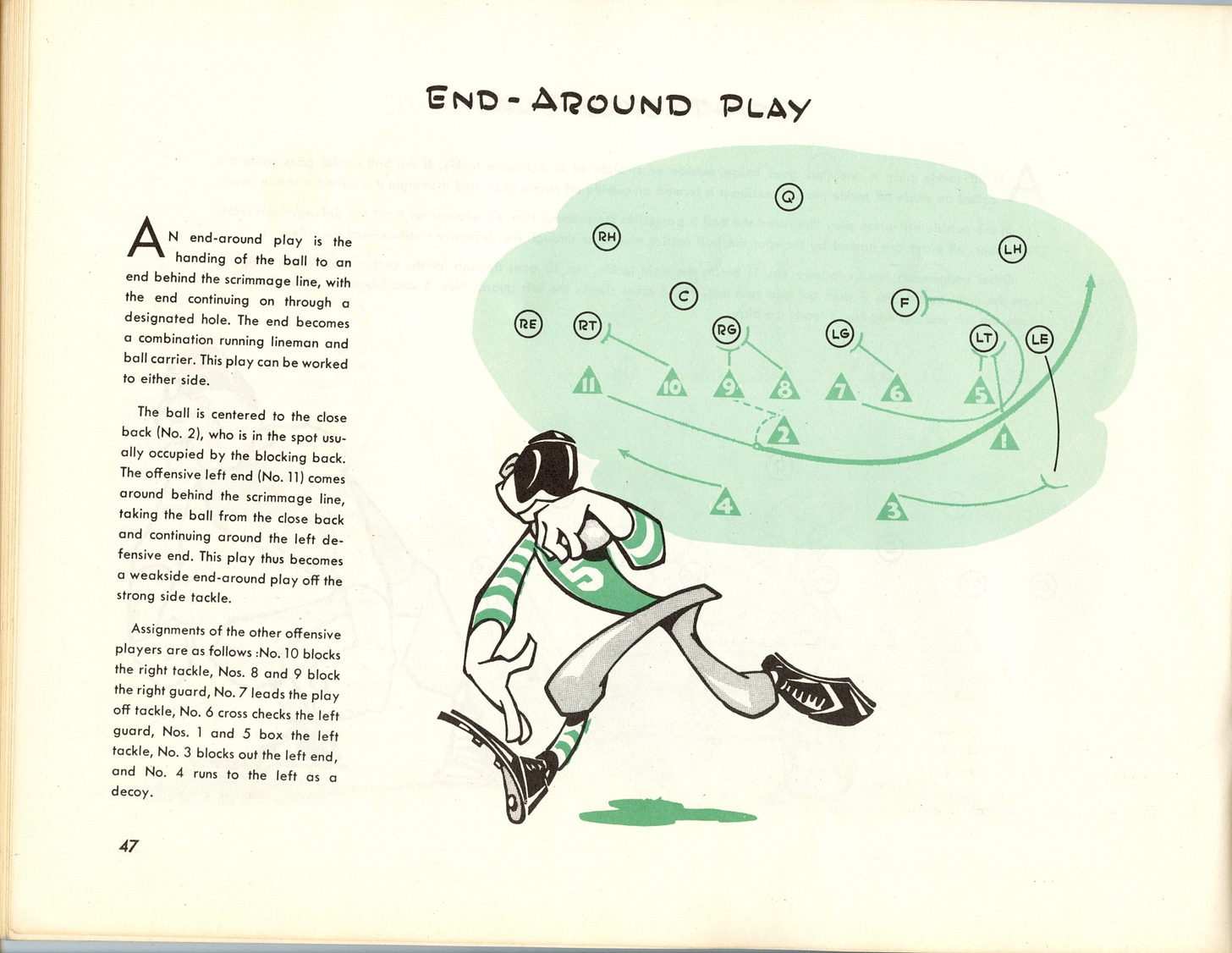
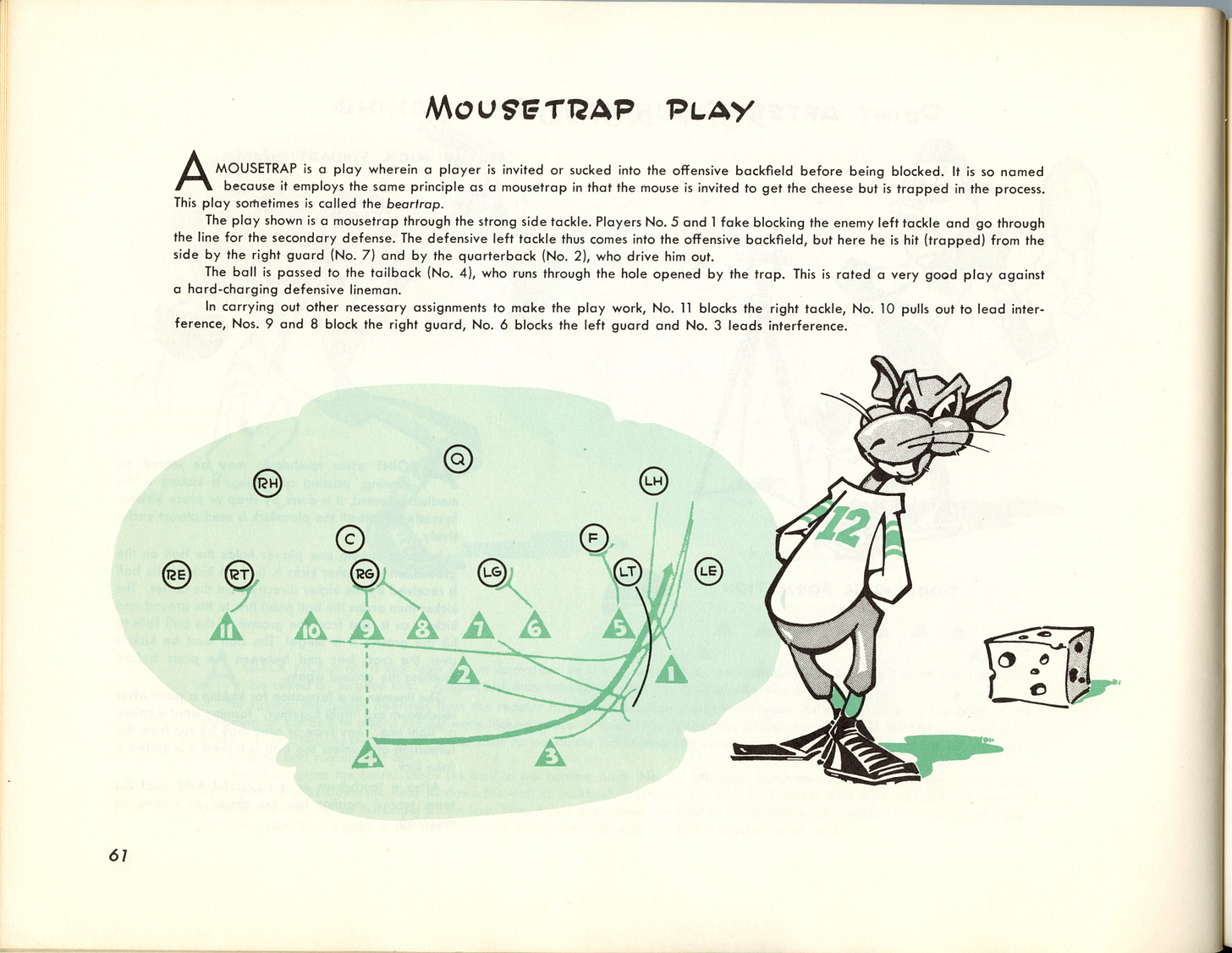
The Quarterback Sneak is often employed in the Canadian Football League.
Wondering when the nomenclature for defensive lineman started diverging from the o-line. Presumably after the move to two-platoon, but thinking of how things line up these days seeing symmetrical names on both sides of the ball is odd, and moderm matchups even more so.
We have defensive ends who line up on tackles, defensive tackles who line up against guards and centers, and defensive guards and centers are nowhere to be found (at least in nomenclature). Meanwhile offensive ends are always listed as "TE" even though they may spend half the game in the slot or the backfield 😄